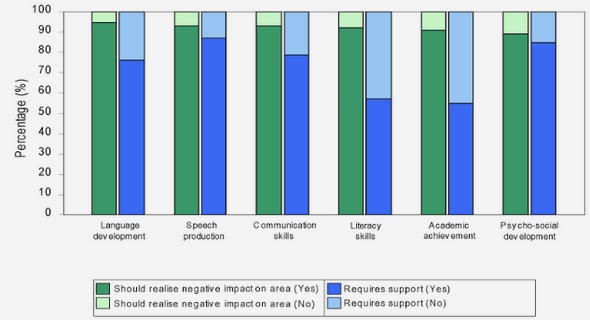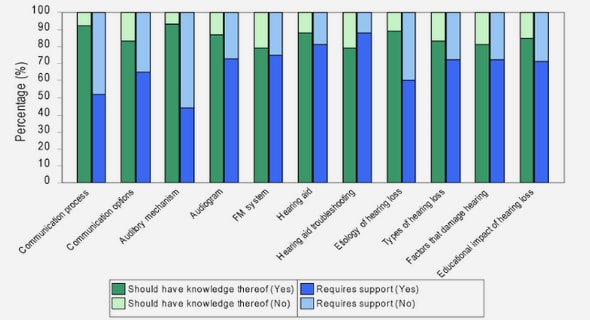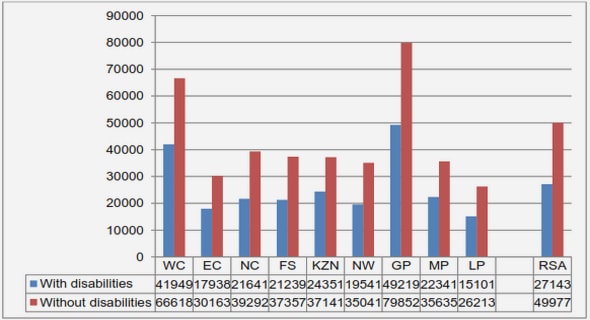Get Complete Project Material File(s) Now! »
Experimental and material characterization of Li-ion cell
The investigation of the properties of LIB components is crucial to validate the model and to check the evolution of the physical parameters of the single cell battery during its entire lifetime. In this chapter, we propose two different time domains for battery characterization. The first one, at beginning of life, in which experimental tests protocols were suggested to identify the model parameters and the reference state of the battery. The second one is about following the evolution of the battery during its lifetime. The different active materials, electrodes and cell designs employed in this analysis are described and detailed. For this study, NMC622 vs graphite battery system is selected to be studied and characterized in the aim to validate the developed models.
Active materials and electrodes
In this section, a presentation of the different electrodes employed in the scoop of the thesis is proposed. Active materials (AM), choice of binders and conductive additive with the manufacturing protocols for the positive, negative and reference electrodes are described. Then, a characterization of the AM and of the electrolyte conductivity are suggested.
Positive electrode
A NMC-based positive electrode (PE) was prepared by coating on an aluminum foil a dispersion of a polycristalline LiNi0.6Mn0.2Co0.2O2 (from Umicore), Super P65 (from Imerys) with an exchange surface area of 65m²/g, VGCF-H (Vapor Grown Carbon Fibers) from Showa Denko as carbon conductive additive and PolyVinyliDene Fluoride (PVDF) as a binder with 92:2:2:4 weight ratio, respectively. The average particle size of the NMC powder 𝒓𝟓𝟎 is around 6.6μm. It has been measured by laser granulometry (Figure II-1 .a). This electrode was prepared using a laboratory in house process [32]. The components were mixed using a planetary mixer, using NMP solvent. The slurry was then coated onto the current collector. A custom reverse roll coater installed in dry room with 1.5 m drying oven was used to dry the electrode, which was then calendared to reach the desired porosity. The positive electrode was manufactured considering a loading of 18.2 mg/cm² corresponding to 3.43 mAh/cm² with a porosity of 24%. Scanning electron microscopy (SEM) was used for preliminary observation of the NMC electrode to see the well-defined spherical morphology of the particles .
Negative electrode
The graphite-based negative electrode (NE) was prepared similarly, by using a mixture of spherical graphite with CMC (from Ashland), SBR (from BASF) binders (acronyms of Sodium Carboxymethyl Cellulose and Styrene Butadiene Rubber) with 97.4:1.3:1.3-weight ratio, respectively, coated on a copper foil. The average particle size of the graphite powder, 𝒓𝟓𝟎 , was measured by a granulometry and it is around 7.88μm (Figure II-2.a). Similar to the positive electrode, the negative electrode was manufactured using the same laboratory in house process, but using deionized water as solvent. The negative electrode was manufactured considering a loading of 10.8 mg/cm² corresponding to 3.78 mAh/cm², with a porosity of 26%. A visual inspection of the SEM image (Figure II-2.b) shows a well define spherical geometry of the graphite.
Reference electrodes
In this work two references electrodes were elaborated. The first one is a lithium foil-based electrode. It was employed for the Galvanostatic Intermittent Titration Technique (GITT) measurements to have access to the equilibrium potential of the active materials inside the pouch cell. In fact, lithium foil reference electrode for the beginning of life tests presents a good stability and has been employed in previous studies [33]. It was prepared by deposing a lithium chip on fine copper mesh with pressing before sealing it on the copper collector.
For Electrochemical Impedance Spectroscopy (EIS) measurements, lithium foil reference electrode suffers from a too low stability [34] and can also cause artificial EIS response detected in Nyquist plots as a “spiral“ type behavior, leading to a lack of reproducibility [35]. These effects make them non-efficient for investigations during aging or impedance measurements. Alternative solutions are proposed in the literature to limit these effects. As reference electrodes must have a stable potential over a large SOC range, lithium titanate (LTO: Li4Ti5012) and lithium iron phosphate (LFP: LiFePO4) have recently attracted considerable attentions as reference electrodes for EIS [36], [23], [37], [38], [39], [40]. For the present work, LFP is manufactured as an alternative solution to lithium electrode, to follow the electrodes potential and the impedance spectra evolution during aging tests. This reference electrode is prepared by mixing a commercial LiFePO4 active material from BeLife with Super P65 as carbon conductive additive and PVDF as binder before a coating on an aluminum mesh.
Estimation of the Electrode geometric parameters
The thickness (𝐸) and the weight (𝑚) of the different electrodes with the separator and the collectors have been measured using numerical dispositive. The electrodes characteristic have been used to re-calculate the porosity and the exchange area of each electrode active material. For the porosity, the following relation is used: Ɛ=1−𝑚𝑆𝐸Σ𝑥𝑖𝜌𝑖
Where 𝑥𝑖 is the mass fraction of one electrode component, 𝜌𝑖 the correspondent density and 𝑆 the electrode surface. Assuming spherical active material geometry, the active material exchange surface can be estimated as following: 𝑺𝑨𝑴=(1−𝜀)3𝑟50𝐸𝑆.
Electrolyte
In this study the employed electrolyte consisting of 1M of lithium hexafluorophosphate salt (LiPF6) in 1:1:1 weight proportion of ethylene carbonate (EC), ethyl methyl carbonate (EMC), and dimethyl carbonate (DMC). Its conductivity dependences to the concentration and the temperature have been estimated (Figure II-3) using Bernardi relation [33] and Arrhenius law respectively. In fact, Bernardi et al. presented in their work an empirical polynomial equation to express the conductivity of an electrolyte, similar to the one that we use in the scoop of this thesis, as function of the concentration and the temperature. Therefore, at T=20°C, the standard conductivity can be expressed as: 𝜎0(𝑇=20°𝐶,𝐶)= 2.72𝐶3 − 14.67𝐶2 + 22,15𝐶.
To get the variation within the temperature, the following Arrhenius law was respected: 𝜎(𝐶,𝑇)=𝑇0𝑇𝜎0(𝐶=1,𝑇=20°𝐶)𝑒− 𝐸𝑎𝑅[1𝑇−1𝑇0] (II. 4)
Where 𝑇0 is the standard temperature equals to 20°C, 𝐶 the concentration, 𝐸𝑎 the activation energy equals to 15510,6 ( 𝐽.𝑚𝑜𝑙−1) and 𝑅 the ideal gas constant.
Cell designs
In this paragraph, the two cell designs employed for the cell characterization are presented. The details of the design’s assembly with the different components and materials are described. The first design is a coin cell design used for beginning of life tests and post-mortem analysis. The second one is a pouch cell design employed for beginning of life and aging tests.
Coin cell design
The first design is a so-called half-cell design in coin cell (CC) format. It is a CR2032 coin cell made of stainless steel and it consists of a top cover, bottom container spacer and spring. An illustrative schema is shown in Figure II-4. The assembly of the CC is carried out as described in Figure II-4 from the positive cap to the negative one. Counter and working electrode disks used are separated by a separator with appropriate dimensions to guarantee the safety and avoid short circuit by contact on the edge of the electrodes. The separator is a 25 μm thick monolayer (PP) Celgard 2400. This design consists of an assembly of the tested active materials electrode as working electrode (graphite in case of the NE and NMC 622 in case of the PE) with a 14mm diameter and a lithium foil as counter electrode, with a 16mm diameter. For postmortem analysis, symmetric CC design is elaborated consisting on Gr vs Gr and NMC vs NMC. It was employed to perform EIS measurements at the end of life of both electrodes.
Table of contents :
Chapter I : Introduction
I.1 Energy context and electrochemical storage for mobility
I.2 Lithium-ion battery
I.3 Li-ion battery models
I.4 Topic of the current thesis
Chapter II : Experimental and material characterization of Li-ion cell
II.1 Active materials and electrodes
II.1.1 Positive electrode
II.1.2 Negative electrode
II.1.3 Reference electrodes
II.1.4 Estimation of the Electrode geometric parameters
II.1.5 Electrolyte
II.2 Cell designs
II.2.1 Coin cell design
II.2.2 Pouch cell designs
II.3 Beginning of life experiments
II.3.1 Experimental protocols
II.3.2 Experimental results
II.4 Aging experiments
II.4.1 Experimental protocols
II.4.2 Experimental result
II.5 Conclusion
Chapter III : Up scaling methodology for Beginning of Life
III.1 Physicochemical phenomena of the battery
III.1.1 Potential of insertion electrode
III.1.2 Polarizable electrodes
III.1.3 Ohmic phenomena
III.1.4 Ion transport
III.2 Up scaling methodology: From the physics to the analytical impedance models
III.2.1 Introduction to the model electrode configuration
III.2.2 Introduction to cell impedance
III.2.3 Local interface impedance
III.2.4 Diffusion impedance
III.2.5 Cell impedance: Results and discussion
III.3 Up scaling methodology: From the analytical impedance models to the temporal CEE models
III.3.1 Cell EEC temporal model
III.3.2 Results and discussions
III.4 Conclusion
Chapter IV : Up scaling methodology for the End of Life
IV.1 Physicochemical phenomena of battery degradation
IV.1.1 Aging mechanism at the negative electrode
IV.1.2 Aging mechanism at the positive electrode
IV.2 Up scaling methodology for aging: From the physics to the analytical impedance models
IV.2.1 . Graphite electrode
IV.2.2 NMC 622 electrode
IV.2.3 Cell impedance: Results and discussion
IV.3 Up scaling methodology: From the analytical impedance models to the temporal EEC models
IV.3.1 Cell EEC temporal model with aging
IV.3.2 Results and discussions
IV.4 Conclusion
Chapter V : Conclusion and perspectives


